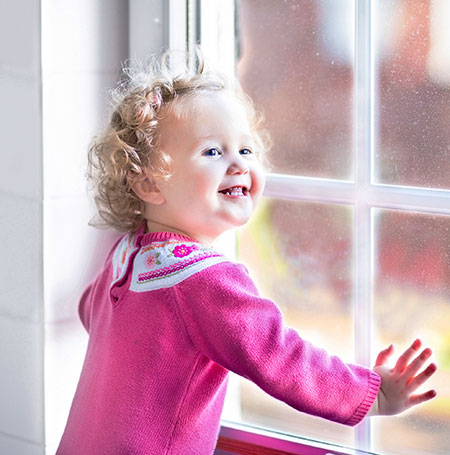
Lead poisoning became a hot topic in light of the 2014 water crisis in Flint, Michigan, but parents need to be mindful of more than just their water supply.
Older homes pose risk
Dr. David Holz, a Marshfield Clinic pediatrician, said lead paint in older homes is the most common source of lead poisoning in children. Homes built before 1950 or 1978 either had no lead paint regulations or regulations that were not strict enough.
Over time, lead paint chips off of walls and windows. As children play on the floor and put their hands in their mouths, they may ingest lead paint.
With Flint the obvious exception, city water is generally well-regulated and tested often, Holz said. People with private water sources may need to do their own testing.
Adults who encounter lead at work also can expose their families by wearing these clothes home. Jobs involving home repairs, remodeling, working with scrap or metal and window fabrication may lead to lead exposure.
Effects of lead poisoning
Children with elevated lead levels may experience low IQ, behavioral problems, attention-deficit/hyperactivity disorder, memory problems and challenges in speech and language development, Holz said. High levels of lead in the body can create fatigue, headaches, muscle aches, anemia and severe neurological problems. In extremely high doses without correction, lead poisoning can be fatal.
Lead poisoning is more concerning for children than adults.
“One reason for this is children’s brains are developing,” Holz said. “Also, children up to age 6 are still developing their blood-brain barrier, which works to keep toxic chemicals outside of the brain circulation.”
What should parents do?
A child acting “overly and persistently irritable” over several months could indicate lead poisoning, Holz said. Parents should watch their children for persistent headache, fatigue, stomach pain, and tingling or numbness in hands and feet.
“If you have lead paint, you can have a company come out and remove it, though this can be very expensive,” Holz said.
Parents with lead paint in the home should:
- Clean window sills with soap and water every week. These are common sources of lead exposure because windows are opened and closed often.
- Have children wash their hands before eating and sleeping.
- Keep floors clean, washing hardwood floors with soap and water.
Your home may not have lead pipes providing water service, but your pipes may have lead soldering joining them together. Water sitting in pipes may dissolve lead off this soldering, tainting the water supply.
Clear potentially tainted water by running the faucet for a few minutes, allowing fresh water to come through. Holz cautioned that not all water filters successfully remove lead from tap water.
If you’re concerned your child has been exposed to lead, make an appointment with a provider.






Leave a Reply